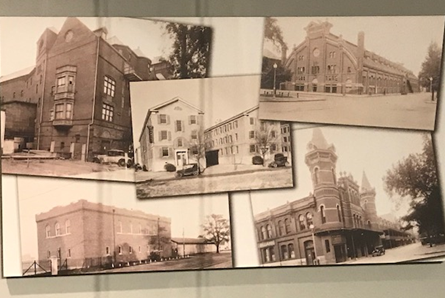 For a brief time, there was an armory on the National Mall where the National Archives building now stands. This building was taken over to be used as a hospital during the Civil War. The D.C. National Guard rented spaces across the city for weekly drills throughout the 19th century. Some of these spaces included rooms above Central Market, The True Reformer Building on U Street N.W., in temporary buildings built for World War I war-workers on North Capitol Street and even the old National Hotel on Pennsylvania Avenue.
For a brief time, there was an armory on the National Mall where the National Archives building now stands. This building was taken over to be used as a hospital during the Civil War. The D.C. National Guard rented spaces across the city for weekly drills throughout the 19th century. Some of these spaces included rooms above Central Market, The True Reformer Building on U Street N.W., in temporary buildings built for World War I war-workers on North Capitol Street and even the old National Hotel on Pennsylvania Avenue.
Many felt that the D.C. Guard needed a permanent home, but the debate over how to fund such a building and where it would be built lingered for decades. During the 1930s, the fervor to build an Armory reached fever pitch. The D.C. National Guard armory came together after a letter from President Franklin D. Roosevelt. Land was donated by the department of the interior, and a plan was drawn up by the Works Progress Administration. The D.C. Armory was the largest building in the Department of Defense at the time it was built in 1943. During World War II, it housed the FBI fingerprinting bureau. The building has also held an important role in the community. Over time, there have been tractor pulls and horse competitions, circuses, car shows, boxing tournaments and Georgetown University has used the Armory for their basketball games.
From 1904-1976, the D.C. National Guard operated a training post in Southeast D.C. known as Camp Simms. At one point the camp was 168 acres, stretching from Alabama Avenue S.E. to the district line and had firing ranges, maintenance shops, and even a swimming pool. With the birth of aviation, the D.C. National Guard established air fields at Bolling Field and later Andrews Field. These posts, now known as Joint Base Anacostia-Bolling and Joint Base Andrews, still host D.C. National Guard facilities and units. In 1980, the D.C. National Guard opened its Army aviation facility at Davison Army Airfield, D.C.’s first property on Fort Belvoir. Following the aviation facility was a new Regional Training Institute which opened on September 11, 2011. The newest D.C. National Guard property, a parcel of land from the District of Columbia’s Oak Hill reservation, in Laurel, Maryland, is the home of the Capital Guardian D.C. Youth ChalleNGe Academy.